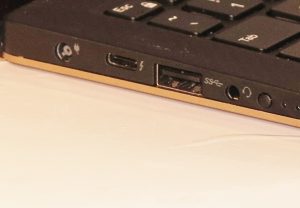Articles
USB 4.0 to adopt Thunderbolt 3 with 40Gbps data transfer speeds | NeoWin
With USB 4, Thunderbolt and USB will converge | TechCrunch
USB 4 Debuts With Twice the Throughput and Thunderbolt 3 Support | Tom’s Hardware
From the horse’s mouth
USB Implementers’ Forum
USB Promoter Group Announces USB4 Specification (Press Release – PDF)
Intel
Intel Takes Steps To Enable Thunderbolt 3 Everywhere – Releases Protocol (Press Release)
My Comments
Intel and the ISB Implementer’s Forum have worked together towards the USB 4.0 specification. This will be primarily about an increased bandwidth version of USB that will also bake in Thunderbolt 3 technology for further-increased throughput.
USB 4.0 will offer twice the bandwidth of USB 3.1 thanks to more “data lanes”. This will lead to 40Gb throughput along the line. It will use the USB Type-C connector and will take a very similar approach to the USB 3.0 standard which relied on the older USB connection types like USB-A, where a “best-case” situation takes place regarding bandwidth but allowing for backward compatibility. There will also be the requirement to use higher-performance cables rated for this standard when connecting your host system to a peripheral device using this standard.
Opening up Thunderbolt 3
Intel is opening up Thunderbolt 3 with a royalty-free non-exclusive licensing regime. It is in addition to baking the Thunderbolt 3 circuitry in to their standard system-on-chip designs rather than requiring a particular “Alpine Ridge” interface chip to be used by both the host and peripheral. This will open up Thunderbolt 3 towards interface chipset designers and the like including the possibility of computing applications based on AMD or ARM-microarchitecture silicon to benefit from this technology.
This effort can make Thunderbolt-3-equipped computers and peripherals more affordable and can open this standard towards newer use cases. For example, handheld games consoles, mobile-platform tablets or ultraportable “Always Connected” laptops could benefit from features like external graphics moduies. It may also benefit people who build their own computer systems such as “gaming rigs” by allowing Thunderbolt 3 to appear in affordable high-performance motherboards and expansion cards, including “pure-retrofit” cards that aren’t dependent on any other particular circuitry on the motherboard.
It is also about integrating the Thunderbolt specification in to the USB 4 specification as a “superhighway” option rather than calling it a separate feature. As well, Thunderbolt 3 and the USB 4 specification can be the subject of increased innovation and cost-effective hardware.
Where to initially
Initially I would see USB 4.0 appear in “system-expansion” applications like docks or external-graphics modules, perhaps also in “direct-attached-storage” applications which are USB-connected high-performance hard-disk subsystems. Of course it will lead towards the possibility of a laptop, all-in-one or low-profile computer being connected to an “extended-functionality” module with dedicated high-performance graphics, space for hard disks or solid-state storage, perhaps an optical drive amongst other things.
Another use case that would be highlighted is virtual reality and augmented reality where you are dealing with headsets that have many sensors and integrated display and audio technology. They would typically be hooked up to computer devices including devices the size of the early-generation Walkman cassette players that you wear on you or even the size of a smartphone. It is more so with the rise of ultra-small “next-unit-of-computing” devices which pack typically desktop computer power in a highly-compact housing.
Of course, this technology will roll out initially as a product differentiator for newer premium equipment that will be preferred by those wanting “cutting-edge” technology. Then it will appear to a wider usage base as more chipsets with this technology appear and are turned out in quantity.
Expect the USB 4.0 standard to be seen as evolutionary as more data moves quickly along these lines.


